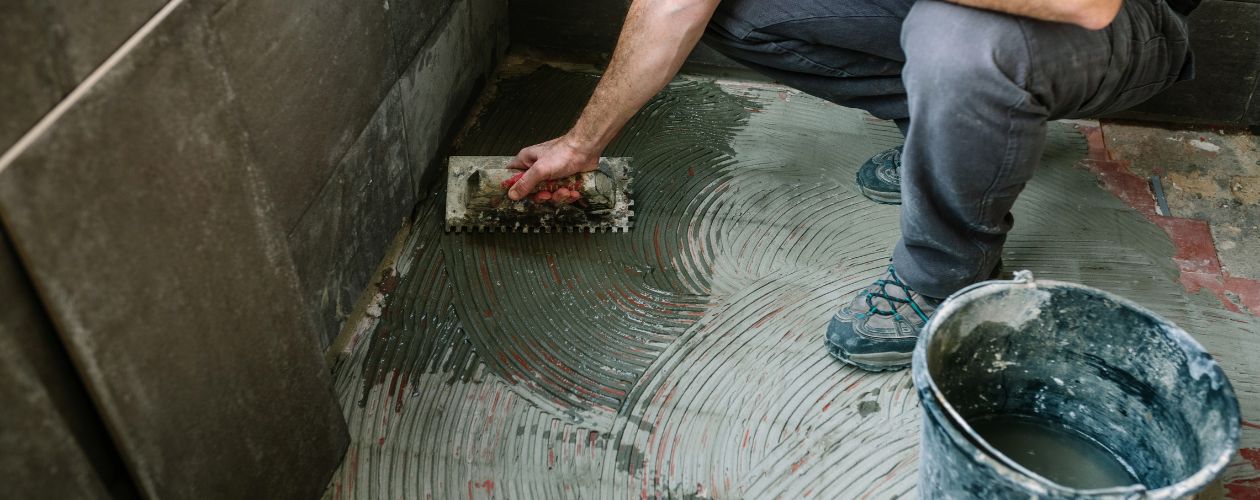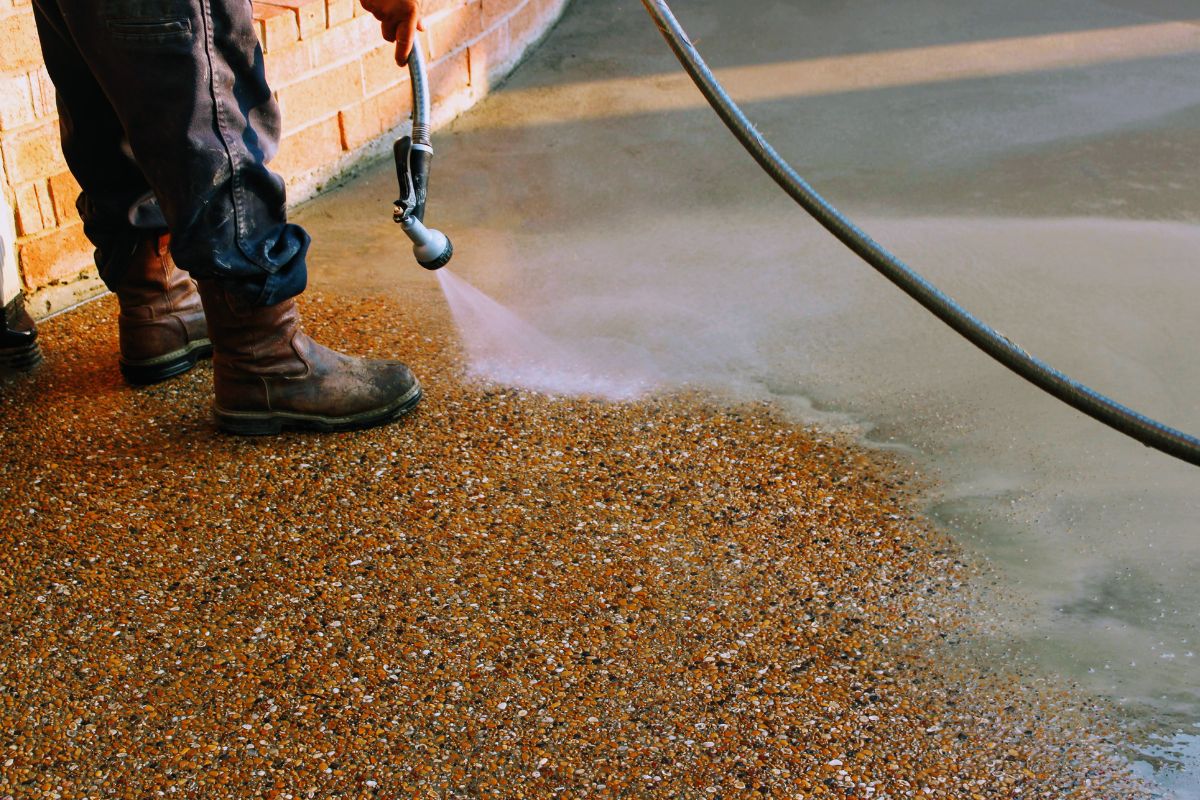Concrete is a material used for buildings and construction. This makes building durable and helps in the long run. Concrete is used for both commercial and residential purposes. Most home builders and concreters recommend this as a suitable material for roofs, pillars, pavements, patios, and flooring. Concrete is also used in driveways and sidewalks. It provides strength to the house in the harshest environment. In this guide, we will discuss the benefits and maintenance of concrete to give your residential concrete a beautiful look and durability for a longer time.
What Is The Importance Of Concrete Maintenance?
Concrete maintenance helps in many ways, such as increasing the value of your house to maintain its beauty. Over time, your house surfaces can become dirty which might result in the formation of cracks and lower the house value. This is why cleaning and sealing the concrete is important. Regular cleaning maintains the beauty of concrete and sealing helps keep it strong for longer. Concrete sealing protects your house from harsh chemicals and bad weather conditions too. Keeping the concrete well-maintained will eventually increase the overall value.
Understanding Concrete Maintenance
Concrete maintenance improves concrete surface functionality and preserves its beauty and appearance. Deterioration of concrete can lead to expensive concrete repairs and replacements. Several factors can affect the building's concrete and cause wear and tear. The temperature fluctuations and rough use are the main reasons. You can notice the early signs by inspection, and apply a coating to enhance the surface resistance. Check below for more about concrete maintenance.
The Importance Of Regular Maintenance
Well-maintained concrete will help in enhancing the overall look and add an aesthetic appeal to your property. It also provides safety from cracks that can lead to trips and falls. You can save money by investing in regular maintenance. This will ensure a safe environment for living and property value also increases. Other than this, maintaining concrete also strengthens the property's structural integrity.
Residential Concrete Maintenance Tips
Maintaining your residential concrete is essential to protect house beauty and foundation strength. Identifying the cracks and repairing them on time can help prevent permanent future damage. Here are some important residential concrete maintenance tips.
- Concrete cleaning and sweeping: Regularly sweeping and cleaning the concrete removes the dirt present and prevents the accumulation of any sort of debris or other materials which can result in mould and mildew.
- Pressure washer deep cleaning: You can use a pressure washer to clean the concrete. This method removes all kinds of dirt and algae from the concrete surfaces.
- Clean using mild detergents or concrete cleaners: The use of mild detergents and concrete cleaners can remove all kinds of grease and oil stains from the concrete surfaces. You can use a stiff brush to scrub and rinse the area using water.
What Is The Importance Of Sealing Concrete?
Sealing your concrete surface protects against stains and marks, and makes concrete maintenance much easier. Sealing enhances the appearance of your concrete and ensures it looks fresh and attractive all year round. It also assists in preventing dirt, grime, salt, oils, and other contaminants from penetrating and damaging the surface.
The sealer creates a barrier between the concrete and the spill which helps prevent staining for a prolonged period, giving you more time to clean the spill.
Sealing shields the surface from harsh weather conditions. With wild weather comes strong winds causing debris to fly around, however when there is a sealer on your concrete, the surface is stronger with its added layer of protection to prevent any damage.
Maintenance Tips For Concrete Patios
- Regular Inspections: Check surfaces for visible cracks, chips, or uneven areas every few months.
- Look for Signs: Watch for small cracks, stains, or surface peeling.
- Monitor Changes: Notice any changes in surface texture or alignment over time.
- Repair: You can repair minor cracks and damages. You can reseal your concrete surface every 2 or 3 years.
- Clean the Area: Remove debris, dust, and loose concrete from cracks.
- Save From Stains: Remove anything that could cause stains immediately. Concrete is porous and can absorb dirt and debris.
- Prevent Chemicals: Even rock salt from an ice cream maker harms patio sealer.
- Install A Shade: You can install a shade over your concrete patio for maintenance.
How To Clean Concrete Patios Effectively?
Cleaning concrete patios requires the right tools and materials to ensure a thorough and hassle-free process. Let’s break down the essential items you’ll need for different DIY patio cleaning methods:
Tools:
- Pressure Washer / Power Washer
- Stiff Bristle Brush
- Wet/Dry Vacuum
- Garden Hose
- Safety Gear
Materials:
- Concrete Cleaner
- Bucket
- Baking Soda
- Vinegar
- Bleach
- Scrubbing Pads or Brushes
- Concrete Sealer (Optional)
Steps Of Cleaning Concrete Patios
- Clearing the Surface: Start by disposing of any particles, and leaves, or remove stains from the concrete patio. Use a brush or leaf blower to comb away the bigger particles, ensuring a clean floor for the next steps. Pay special attention to corners where dust tends to be built.
- Preparing the Cleaning Solution: Combine your cleaning solution next. You have two options for cleaning concrete: buy a commercial product or make your own using common home items like dish soap, vinegar, and baking soda. Follow the directions on the product label to combine the components.
- Applying the Cleaner and Scrubbing: Once your cleansing answer is ready, apply it kindly to the entire floor of your concrete patio. Use a stiff-bristled brush or broom to wash away stubborn stains and dirt. Work in small areas to ensure thorough precaution and powerful cleaning. After scrubbing the surface, leave the area for 10-15 minutes. The clean concrete patio will shine under the afternoon sun.
- Rinsing Away the Grime: Rinse the patio thoroughly with a garden hose or stress washing machine to clean the cement patio. Remove all strains of the cleansing solution, as leftover residue can leave stains on the concrete surface. Pay attention to regions that require greater cleaning and give them extra effort.
- Sealing for Protection (Optional): You may use a concrete sealer to extend the cleanliness of your concrete patio and save it from future stains and harm.
Seasonal Care Tips For Concrete Patios
- Clear the snow regularly: Snow accumulates easily on concrete surfaces during the winter. Due to changes in the temperature it gets melted and the water moves into the pores of the concrete surfaces. This will lead to the formation of cracks and damage to the tiles.
- Don’t use metal-edged shovels and scrapers: Although metal-edged shovels and scrapers are useful in removing stains, they can also significantly damage the tiles by leaving scratches and cracks. You can use a de-icing agent to remove the ice instead of metal shovels.
- Avoid using Sodium Chloride and Magnesium-based de-icers: Not all de-icing agents are safe for removing the ice from the concrete tiles. Sodium chloride and Magnesium-based deicers can significantly damage concrete surfaces by penetrating the surface and causing chemical reactions.
- Use sand for traction: Sand is safe for concrete surfaces and helps in providing better traction. You can mix it with the de-icing agents to remove the ice.
How To Repair Small Cracks On Concrete Patio?
Concrete patios are durable but develop cracks over time. Minor cracks may be filled with crack filler or patching material.
Steps To Repair Small Cracks
- To clean the crack, use a wire brush and broom to sweep away debris.
- Apply patching material or crack filler to the crack, making sure it gets into the crack.
- Let the patching material dry according to the manufacturer's instructions.
- Once dry, sand the area until it is smooth and level with the rest of the patio.
Best Practices For Concrete Driveway Maintenance
Driveways experience heavy usage and should be cared for regularly. Here are some tips:
- Pressure wash the driveway at least once a year.
- Seal the driveway every 2-3 years to protect against staining and damage.
- Promptly remove oil or chemical spills to prevent staining.
- Avoid using harsh chemicals that could erode the concrete.
Sealing Concrete Driveways
Sealing a concrete driveway will improve its appearance and protect it from future wear and tear. Here are the steps to seal a concrete driveway:
- Choose the right sealer for your driveway.
- Clean the driveway thoroughly before sealing.
- Apply the sealer evenly across the driveway surface using a roller or sprayer.
- Allow the sealer to dry completely before using the driveway.
Conclusion
Residential concrete maintenance is an important investment that can extend the life of your concrete surfaces, improve safety, and enhance the overall appearance of your home. Whether it's a patio, driveway, or other concrete surfaces, regular cleaning, sealing, and minor repairs are essential to maintaining its beauty and functionality. By following the tips and guidelines provided in this guide, you can ensure that your concrete surfaces remain in excellent condition for years to come.











